
Starting June 1st, 2023 Our warehouse fee will be $0.65/cubic foot per month
In effort to lower the warehouse storage fee during inflation, we have went narrow aisle racking.This construction took us four months but the project is finally completed. With narrow aisle racking, we are able to drop storage by 24%.We as partners will go through this inflation together.
12/06/2023
Many small online businesses may aim to begin by approaching simple shipping methods. Some might even believe that their e-commerce platform has everything needed to manage the entire logistics process. However, the importance of an e-commerce shipping strategy is far greater than many realize. Consumers expect fast, affordable, and convenient shipping that offers a wide range of products, which can help you outshine your competitive counterparts. E-commerce shipping is not merely about free shipping and swift delivery. In this article by Worldcraft Logistics, we will guide you through all the resources you need to plan, create a strategy, and efficiently operate your e-commerce shipping process.
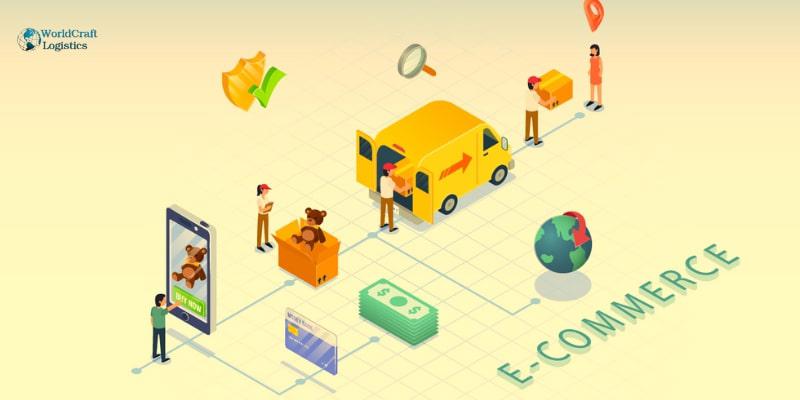
Almost all of the most successful business owners are utilizing strategic options and leveraging E-commerce shipping to gain a competitive edge, thereby boosting their profit margins significantly since 2020. According to reports from two major sources, BigCommerce and Retail Dive, by the end of 2020, following the surge in digital shopping activities due to the COVID pandemic, 51% of retail leaders stated their intention to increase investments in supply chain and logistics.
There is no e-commerce platform that can manage the entire logistics process, including ERP, CRM, and various other aspects. Take the time to thoroughly research the logistics process. Simultaneously, you need to execute well both operationally and strategically, which demands coordination across multiple teams, from marketing to order processing and many others in between. Establishing your shipping policies is crucial to ensure that everyone involved in the process understands their role within it.
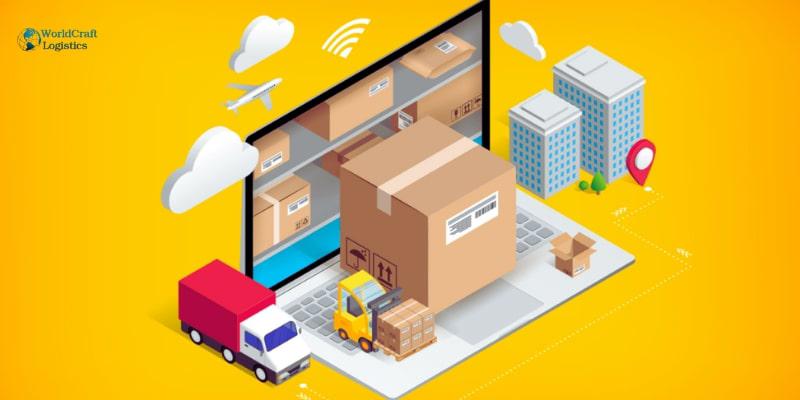
E-commerce shipping encompasses a series of tasks involved in fulfilling online orders, including order processing, product selection, packaging, label printing, and handling returns. On the surface, it may appear straightforward, especially when observing a well-organized warehouse. However, the reality is that the intricate interplay of various factors introduces complexity. This complexity depends on factors such as the nature and size of your products, your target delivery regions, the range of delivery options, chosen shipping speeds, and more.
Transitioning from a brick-and-mortar business to an e-commerce model offers several advantages in today's digital era. Economists project that e-commerce will generate profits of $4.2 trillion by 2025. While maintaining a physical presence has its merits, establishing an online presence can expand your brand's reach, provide accessibility to products beyond regular operating hours, and enhance your competitive edge.
You will definitely need knowledge about new transportation industry terminology:
What is domestic shipping? Benefits, pricing and efficient planning
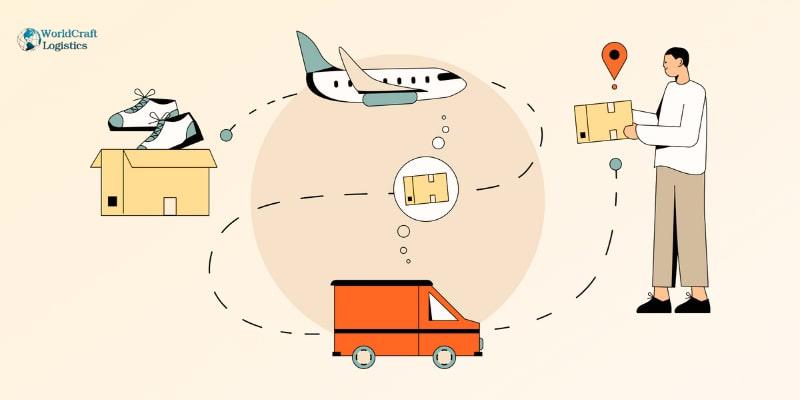
In the realm of e-commerce, the shipping process encompasses the entire journey from receiving a customer's order to preparing it for the final leg of delivery. This intricate process can be categorized into three key stages:
Order Reception: This phase entails ensuring that the requested items are available in stock, ready to meet the order requirements.
Order Validation: During this stage, meticulous scrutiny of the order data is conducted to ensure its accuracy, including crucial tasks like verifying the shipping address to prevent any discrepancies.
Order Fulfillment: At this juncture, a detailed picking list is generated, and the items are carefully selected, packed, and readied for shipping, ensuring a seamless journey from the seller to the customer.

There's no universal ecommerce shipping strategy that fits all businesses. The right ecommerce shipping approach for your company depends on various factors, including your target audience, budget, profit margins, product offerings, and more. As a general guideline, offering a mix of fast and cost-effective shipping options can effectively reduce shopping cart abandonment rates and boost conversion rates. Here are six shipping methods to consider integrating into your ecommerce shipping strategy:
Thanks to Amazon Prime, 2-day shipping has become synonymous with online shopping and is a highly sought-after ecommerce shipping option. While it might seem like a premium service reserved for e-commerce giants, there are cost-effective ways for businesses of all sizes to provide 2-day shipping to their customers.
Same-day delivery ensures that orders are delivered on the same day they are purchased. A remarkable 61% of consumers are willing to pay more for this rapid shipping service. Successfully implementing same-day delivery necessitates well-coordinated operations, adequate resources, reliable courier services, and advanced technology.
In a world where 2-day shipping is the norm, ecommerce brands can distinguish themselves with overnight shipping. This shipping method guarantees that customers will receive their orders on the following business day. Different carriers offer overnight shipping services at varying price points.

Expedited shipping encompasses any shipping method faster than standard ground shipping. The exact turnaround time for expedited orders may vary depending on the carrier and specific shipping services. Offering expedited shipping can help reduce shopping cart abandonment, meet customer expectations, and foster customer loyalty through effective ecommerce shipping solutions.
Whether your business is based in the US and aiming to expand globally or situated abroad with aspirations of shipping within the US, international shipping can present considerable challenges and expenses.
Various countries impose distinct regulations, tariffs, taxes, and inbound shipment requirements, underscoring the significance of partnering with experienced fulfillment providers. These partners should not only assist you in navigating the Universal Postal Union (UPU) agreement and international shipping complexities but also offer cost-effective shipping rates.
Take Worldcraft Logistics for instance; it is a global fulfillment company with physical facilities in multiple countries, making it a valuable ally in overcoming the hurdles of international shipping.
For eco-conscious brands and customers, eco-friendly shipping is an option. It involves the use of biodegradable materials for packaging and shipping products. These materials can be easily recycled or repurposed, and they decompose more quickly. Many eco-friendly packaging solutions, such as compostable mailer bags and biodegradable packaging peanuts, are available for online brands.

Hybrid shipping services like UPS SurePost and FedEx SmartPost collect orders and collaborate with other carriers, such as Worldcraft Logistics (the transport/freight company in U.S) to transport packages to sorting facilities or post office locations before reaching their final residential destinations. Opting for a hybrid shipping method can significantly reduce shipping costs, sometimes by as much as 50%. However, the tradeoff is often slightly slower delivery.
Freight shipping involves the transportation of cargo globally via air, land, or sea. Shipments exceeding 30 inches in any dimension or weighing over 150 pounds are typically considered freight. Ecommerce businesses use freight shipping to receive inventory from manufacturers and send products to fulfillment centers or distributors.
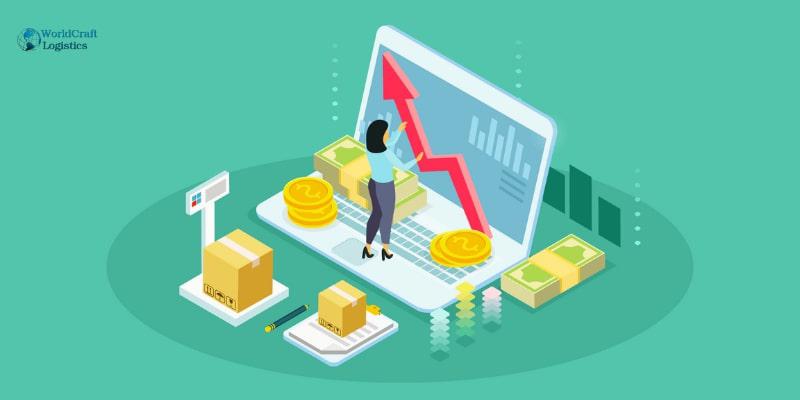
Before finalizing your shipping strategy or determining the pricing for your customers, it's crucial to gain a comprehensive understanding of your shipping expenses. While 73% of online shoppers anticipate affordable and swift deliveries, it's equally important to ensure that the shipping rates you offer are economically viable for your business. Here's a high-level overview of common ecommerce shipping costs:
Carrier Cost (Shipping Label): This is the amount charged by the carrier for postage, covering the transportation of the package from its origin to its destination.
Packaging Cost: These costs are associated with ensuring the safety and security of the items being shipped. This includes expenses for materials such as boxes, poly mailers, tape, dunnage (packing material), and other packaging supplies.
Fulfillment Cost: This encompasses the labor required for various tasks, including picking the items, packing them, and managing the shipping process.
Other Costs (Optional): Depending on the nature of the items you are shipping and any additional requirements, you may incur additional expenses such as insurance or signature confirmation. These are considered optional but can be essential for certain products or situations.
Overhead Costs: These are typically fixed expenses associated with handling and shipping ecommerce orders, whether you're operating from home or a dedicated warehouse. Overhead costs may include expenses for shipping and/or warehouse management software, warehouse lease, equipment within the facility, printers, ink, employee wages, and other related operational costs.
By thoroughly assessing and understanding these various components of shipping costs, you can make informed decisions about your shipping strategy, pricing, and customer offerings, ensuring that they align with your business's financial sustainability.
Factors affecting e-commerce shipping costs:
All major shipping carriers employ a pricing method known as dimensional (DIM) weight to calculate shipping expenses. DIM weight considers the package's size when determining the shipping cost. Shipping carriers like USPS, FedEx, and UPS calculate shipping charges based on whichever is higher: the actual weight of the package or its DIM weight. The greater of the two becomes the billable weight for which your business will be charged.
For growing businesses seeking to reduce shipping expenses, partnering with a third-party logistics (3PL) provider can have a substantial impact. Outsourcing shipping services to a 3PL can enable e-commerce businesses to scale their operations and access shipping discounts. A 3PL's network of fulfillment centers can also assist e-commerce stores in saving on shipping costs while minimizing transit times.
Shipping zones measure the distance between the package's origin and its destination. In the continental US, these zones can vary from Zone 1 to Zone 8. Carriers use shipping zones to compute shipping rates, and these zones are determined by the package's point of origin. Consequently, two packages originating from different locations but shipping to the same destination may fall into entirely different zones. Generally, the higher the shipping zone, the more expensive it is to ship a package.
Shipping zones measure the distance between the package's origin and its destination. In the continental US, these zones can vary from Zone 1 to Zone 8. Carriers use shipping zones to compute shipping rates, and these zones are determined by the package's point of origin. Consequently, two packages originating from different locations but shipping to the same destination may fall into entirely different zones. Generally, the higher the shipping zone, the more expensive it is to ship a package.
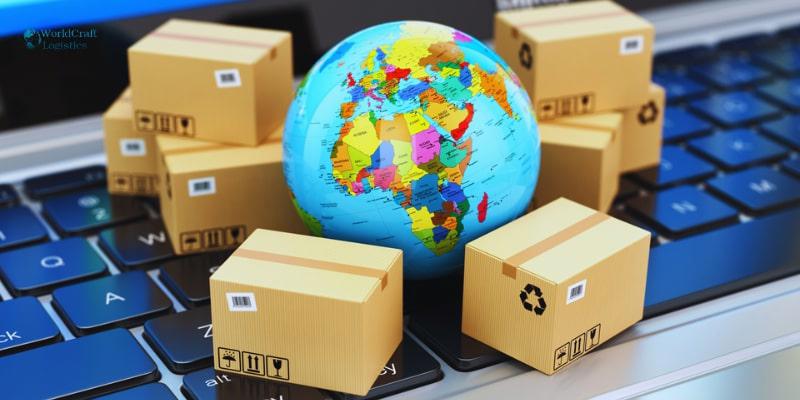
When you hear “shipping,” you may only picture the process as far as getting the package to a shipping carrier. But the shipping process — especially when it comes to customer satisfaction — is so much more than that. You have to be able to offer a positive customer experience all the way from purchase to order fulfillment through to shipping and delivery — and, if necessary, returns.
Order management refers to receiving, processing and order fulfillment. With a strong order management system, whether it’s embedded in your shipping software or not, you can reduce inventory issues, fulfill items in a timely manner and minimize errors. That order management system acts to put all your critical data in one place, so you can streamline your back-office operations and make data-driven business decisions.
When you ship an order, whether in-house or through a 3PL, make sure to pass the tracking number on to the customer. An order management system allows you to track the shipment each step of the way — and your customers can do the same. Though rare, you must also have a good system in place for split shipments.
Returns can be a huge headache for ecommerce businesses, but having the right ecommerce returns process in place pays off: 95% of shoppers who are happy with the returns process said they’ll purchase from the same retailer again. That said, shoppers who are unhappy with the returns process are 3x more likely to never purchase from that retailer again. Working with a 3PL can help you leverage years of industry experience, knowledge, and best practices to manage returns at scale.
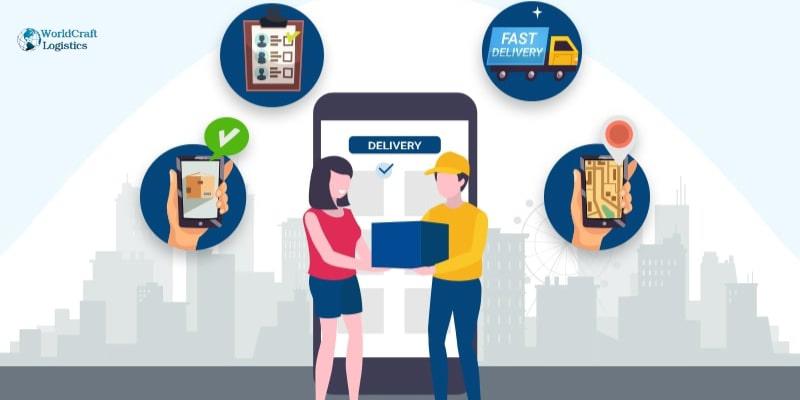
The choice of e-commerce shipping partners can vary depending on the region, type of business, and specific needs. However, as of my last knowledge update in January 2022, some of the most commonly used e-commerce shipping partners in the United States and globally include:
Furthermore, external partnership options also represent a considerably more cost-effective and expedient choice, particularly when major shipping carriers are experiencing high demand. Some suggested options in this regard include Worldcraft Logistics, SHIPHYPE Fulfillment, Ware-Port, Ideal Fulfillment, and others. These service providers offer comprehensive order warehouse fulfillment and shipping services, encompassing warehousing, order picking, packaging, and transportation.
It's important to note that the choice of shipping partner should align with your business's specific needs, budget, and target audience. Additionally, the popularity of shipping partners can change over time, so it's advisable to research the most suitable options for your e-commerce business based on the current market conditions and your unique requirements.
Considering the varying rules, regulations, and associated risks, which can differ significantly from one country to another, it is crucial to gain a comprehensive understanding of your shipping alternatives and fulfillment services. This will allow you to identify options that offer the lowest costs and effective risk management. Here are key considerations to address before embarking on international shipping:
By addressing these considerations thoroughly, you can make well-informed decisions and create a successful international shipping strategy that minimizes costs and mitigates potential risks.
When introducing a new shipping approach, or any fresh strategic initiative, it's vital for leaders throughout your organization not only to support the endeavor but also to be prepared to actively contribute to its realization. Shipping and fulfillment are not confined to the back-office; they have a direct impact on the customer experience. Therefore, it's crucial to ensure that your marketing, customer service, and, of course, your fulfillment team are all aligned and working collaboratively toward the same objective.
According to the findings of Worldcraft Logistics, e-commerce shipping is a crucial aspect of your online business that goes beyond logistics. It's a powerful tool for enhancing customer satisfaction, building brand loyalty, and staying competitive globally. By employing efficient shipping strategies, clear communication, and brand-conscious packaging, you can create a seamless and memorable customer experience. Remember, in e-commerce, shipping is not just about delivery; it's the final touch that completes the online shopping journey and distinguishes your brand.
SEO
Digital Marketing/SEO Specialist
Simon Mang is an SEO and Digital Marketing expert at Wordcraft Logistics. With many years of experience in the field of digital marketing, he has shaped and built strategies to effectively promote Wordcraft Logistics' online presence. With a deep understanding of the logistics industry, I have shared more than 500 specialized articles on many different topics.

Education
01/05/2025

Education
02/18/2025

Education
01/01/2024

Education
08/28/2024

Education
11/13/2023